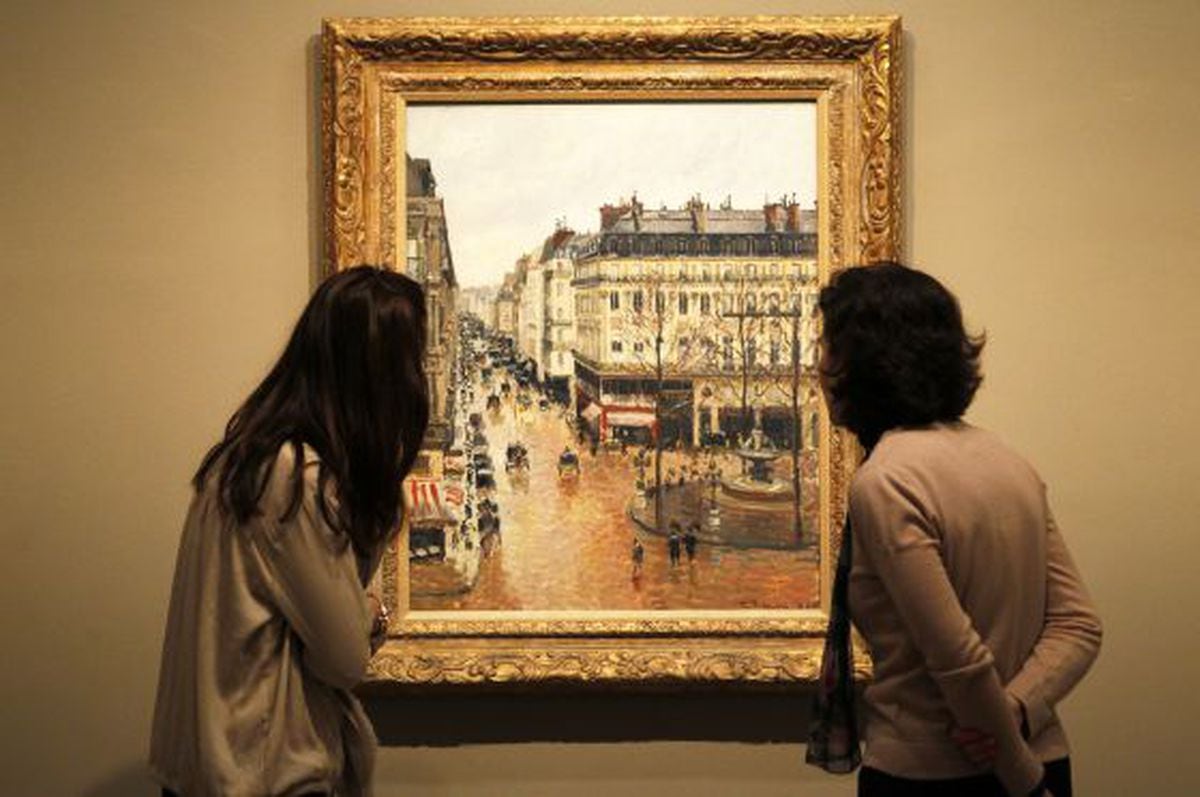Aesthetic considerations have been made to beg this Tuesday in the Supreme Court of the United States.
Judges and lawyers had been in Washington for more than an hour listening to and discussing arguments from both sides at the oral hearing on the painting
Rue St. Honore, apres midi, effet de pluie
(1897), a work by Camille Pissarro looted by the Nazis in 1939 and property for almost 30 years of the Spanish State as part of the Thyssen collection, when the conservative judge Clarence Thomas has said in a tired tone: "Can't we all at least agree that it is a beautiful painting?".
Yes, after a tense and very technical legal tug-of-war, everyone has agreed on that.
More information
Whose painting is that looted by the Nazis?
Also, apparently, in what is known about its troubled history, an unbeatable summary of what the terrible 20th century brought to Jewish lovers of art, in this case Impressionist. But today was not the day to discuss that vicissitude, nor about the artistic merits of the canvas (Pissarro's name has not even been invoked), but what law should be applied, whether the Spanish or the Californian, in the event that For almost two decades, the Cassirer-Neubauer family has been facing the Madrid museum.
In this Tuesday's session, the members of the Supreme have been used more to embarrass Thaddaeus J. Stauber, who spoke in favor of Thyssen, than his opponent. This skepticism invites us to think that they are inclined to review the criteria of the two judges from Los Angeles and San Francisco who in 2015 and 2020 agreed with the Thyssen Foundation in opting for the Spanish law. But they are just assumptions. The final decision will take time to know. Sources from the high court confirm that this can be pronounced as soon as in a month, although it is most likely that the sentence will arrive, together with the pronouncement on other matters of greater importance, such as the right to abortion, at the end of the current exercise, which closes between the end of June and the beginning of July.
Under Spanish law, public possession of the painting for six years is enough to consider the museum its rightful owner. The Thyssen had exhibited the
pissarro
for almost eight years before the Cassirers first requested its return in 2001, a year after Claude Cassirer, a photographer who died in 2010 at the age of 89, discovered by chance in the rooms of the foundation the painting looted from his ancestor. Under California law, an object obtained in this way cannot generate legitimate title to the property even if, as is the case, it was acquired in 1976 by Baron Hans Heinrich von Thyssen-Bornemisza in good faith. In 1976, he paid $360,000 to a New York gallery. The Spanish State bought it in 1993 as part of its collection for 350 million dollars.
The litigants are heirs to Lilly, a wealthy Jew who received the canvas in 1926 and was forced to sell it to a dealer in the service of the Third Reich for $360 in 1939, at the dawn of World War II.
It was the condition to be able to leave Germany and avoid being taken to a concentration camp.
Although in reality, he never received the money, since the deposit was made into an account already blocked by the Nazi regime.
After the war, Lilly Cassirer claimed the work, which was given up for lost, and the Government of the German Federal Republic recognized her as its owner;
he gave him 120,000 marks as compensation.
The painting was located in the United States in 1951, when it was purchased by art collector Sydney Brody.
A foreign country, as responsible as an individual
In this Tuesday's session in Washington, in which, more than World War II, the conflict between federal customary law (which prevails over the isolated decisions of each State) and the principle of election was discussed, David Boies, acting on behalf of the Cassirers, has invoked section 1606 of the United States Federal Code, which holds that exceptionally a foreign country may be liable in the same way as an individual. And, as one of the judges has stated, "when a United States citizen moves from New York to Ohio, the laws that apply to them change." Boies has also dusted off the Klaxon Doctrine, which emerged from a 1941 case that set the precedent that in the face of a conflict in applying the law,the court must choose the one of the State in which it is located (in this case, California).
On the part of the Thyssen Foundation, Stauber has highlighted that, despite the fact that the first litigation dates back to 2005, it was not until 2015 that the family used the legal argument that they have now raised to the Supreme Court as a last resort.
For Stauber, the good harmony of international relations, enshrined since 1976 by the Law on Foreign Sovereign Immunities, must prevail.
He has also argued that California cannot have a greater interest in this case (a looting committed in Germany of an object that has been in Spain for three decades), than the fact that "David Cassirer decided to retire in San Diego."









/cloudfront-eu-central-1.images.arcpublishing.com/prisa/OV2VBR4SENF6HBYT4PL7REJMVU.jpg)